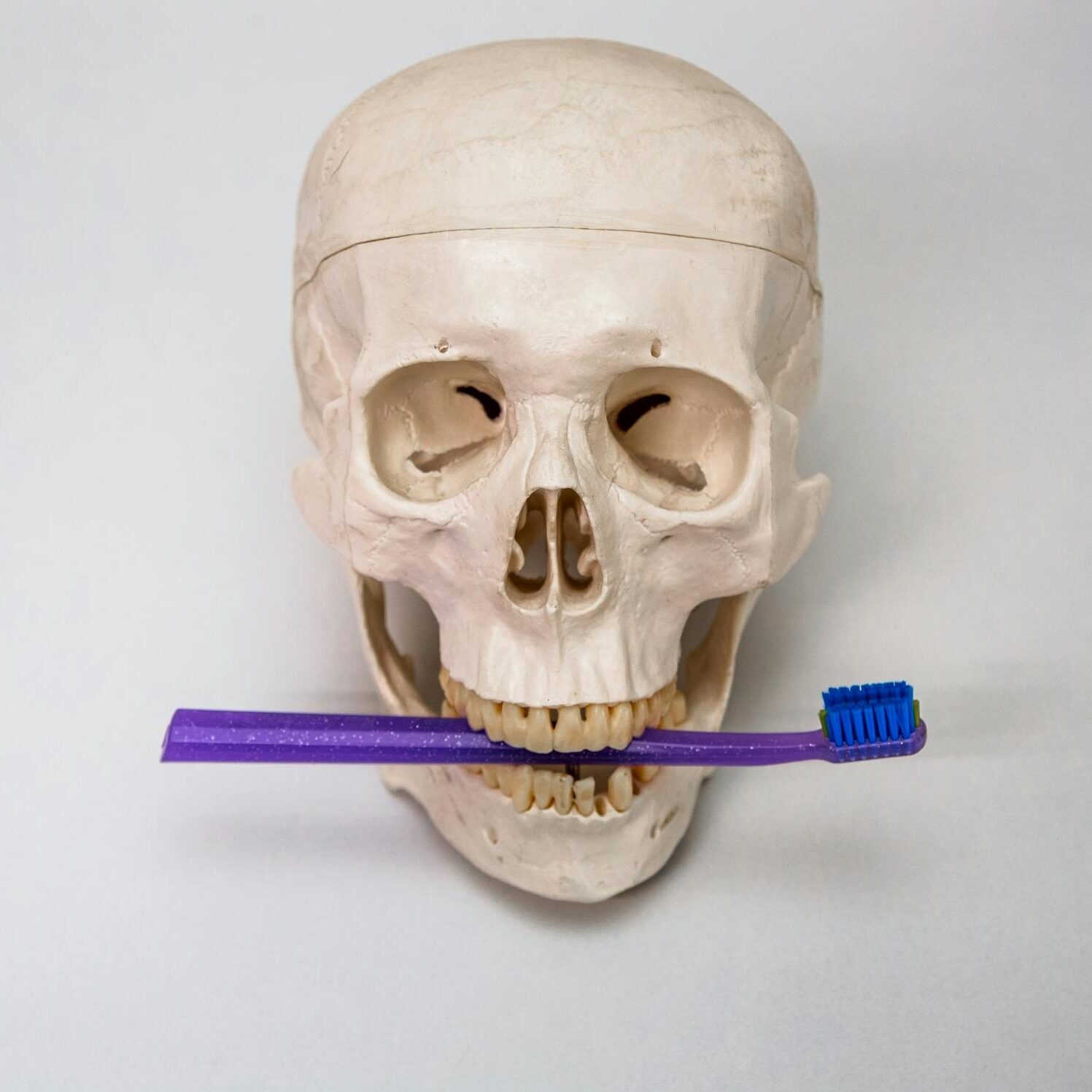YOUR ULTIMATE GUIDE TO KEEPING YOUR TEETH HEALTHY AND STRONG
HERE IS A STEP BY STEP GUIDE TO THE PERFECT ORAL ROUTINE :-
1. Brush Twice a Day (Morning and Night)
- Time: 2 minutes per session
- Brush type: Soft-bristled toothbrush (manual or electric)
- Toothpaste: Fluoride toothpaste
- Technique: Brush at a 45-degree angle to your gums, using short, gentle strokes. Cover all tooth surfaces (outer, inner, and chewing surfaces) and brush your tongue to remove bacteria and freshen breath.
2. Floss Daily (FLOSS LIKE IT’S YOUR JOB)
When: Once a day, preferably at night before brushing
Why: Flossing removes food particles and plaque from between your teeth and below the gum line where your toothbrush can’t reach.
How: Use about 18 inches of floss, winding most of it around your fingers. Gently glide the floss between your teeth, hugging the curve of each tooth.
*TIP*apply your toothpaste on the floss to prevent cavities between the teeth 😉
3. Clean Your Tongue (PLEASE brush ur tongue that’s literally why your breath stinks all day!)
When: After brushing
Why: Bacteria build up on your tongue, contributing to bad breath and plaque.
How: Use a toothbrush or a tongue scraper to gently clean your tongue from back to front.
4. Drink Plenty of Water Throughout the Day
Why: Water helps wash away food particles, bacteria, and acids that can harm your teeth. Fluoridated water is especially beneficial for strengthening enamel.
5. Limit Sugary and Acidic Foods
Why: Sugary and acidic foods can erode tooth enamel and contribute to cavities.
Tip: If you consume them, rinse with water or chew sugar-free gum afterward to neutralize the acid.
6. Chew Sugar-Free Gum
- When: After meals, when brushing isn’t possible
- Why: Chewing gum increases saliva production, which helps neutralize acids and wash away food particles.
- Tip: Look for gum that contains xylitol (tastes sweet but unlike sugar it can help prevent tooth decay)
7. Visit Your Dentist Regularly
How Often: Every 6 months (or as recommended by your dentist)
Why: Routine cleanings and exams help catch any potential problems early and keep your teeth in top condition.
8.Use an Antimicrobial Mouthwash (optional)
- When: After brushing and flossing
- Why: Mouthwash helps to kill bacteria, reduce plaque, and freshen breath. Some mouthwashes also contain fluoride to help strengthen enamel.
- How: Rinse for 30-60 seconds with the recommended amount of mouthwash.
Bonus: Consider Dental Tools
Electric toothbrush: More effective at removing plaque than manual brushes.
Water flosser: A great addition for people with braces or trouble using traditional floss.
